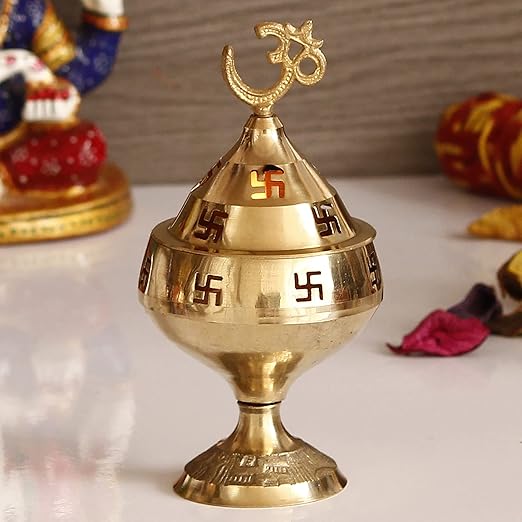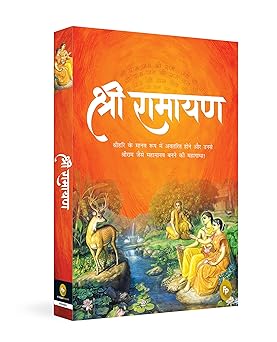भीमाशंकर मंदिर, पुणे जिला: एक पवित्र ज्योतिर्लिंग मंदिर
परिचय
महाराष्ट्र की सह्याद्रि पहाड़ियों में स्थित भीमाशंकर मंदिर भगवान शिव के बारह ज्योतिर्लिंगों में से एक है। पुणे जिले में स्थित यह प्राचीन मंदिर न केवल पूजा स्थल है बल्कि अपने प्राकृतिक परिवेश के कारण प्रकृति प्रेमियों के लिए स्वर्ग भी है। यह मंदिर अपने आध्यात्मिक महत्व, ऐतिहासिक जड़ों और लुभावने वातावरण के लिए प्रसिद्ध है, जो इसे एक अवश्य देखने योग्य तीर्थ स्थल बनाता है।
इतिहास और पौराणिक कथा
भीमाशंकर मंदिर की जड़ें हिंदू पौराणिक कथाओं में गहरी हैं। पौराणिक कथा के अनुसार, यह मंदिर कुंभकर्ण के पुत्र भीम की कहानी से जुड़ा है, जिन्होंने दैवीय शक्तियों की तलाश के लिए तपस्या की थी। जब उसने लोगों और देवताओं को पीड़ा देना शुरू कर दिया, तो भगवान शिव प्रकट हुए और उसे हरा दिया, जिससे इस पवित्र स्थान पर ज्योतिर्लिंग प्रकट हुआ।
मंदिर की उत्पत्ति प्राचीन काल से हुई है, जिसमें वास्तुशिल्प तत्व नागर शैली से मिलते जुलते हैं। कई विद्वानों का मानना है कि मंदिर का निर्माण 13वीं शताब्दी के दौरान किया गया था, जिसमें बाद में 18वीं शताब्दी में पेशवाओं, विशेष रूप से नाना फड़नवीस का योगदान था।
वास्तुशिल्प महत्व
भीमाशंकर मंदिर जटिल पत्थर की नक्काशी और आध्यात्मिक रूप से उत्थानशील माहौल के साथ पारंपरिक नागर शैली की वास्तुकला का एक उदाहरण है।
मंदिर की मुख्य विशेषताएं:
ज्योतिर्लिंग मंदिर: मंदिर में एक पवित्र स्वयंभू ज्योतिर्लिंग है, जो पूजा का केंद्र बिंदु है।
मूर्तियां और नक्काशी: दीवारों और स्तंभों पर प्राचीन हिंदू देवता, पौराणिक दृश्य और उत्कृष्ट पत्थर की नक्काशी है।
मंदिर परिसर: मंदिर हरे-भरे जंगलों से घिरा हुआ है, जो इसके शांत और रहस्यमय वातावरण को जोड़ता है।
भीमाशंकर की घंटी: मंदिर में एक बड़ी पुर्तगाली शैली की घंटी भी है, जो मराठों के युग का अवशेष है।
त्यौहार एवं उत्सव
भीमाशंकर मंदिर भव्य उत्सवों का केंद्र है, जो हजारों भक्तों को आकर्षित करता है।
मनाए जाने वाले प्रमुख त्यौहार:
महाशिवरात्रि: सबसे भव्य त्योहार, विस्तृत अनुष्ठानों, रात भर की प्रार्थनाओं और विशेष पूजा के साथ मनाया जाता है।
श्रावण मास (जुलाई-अगस्त): भगवान शिव को समर्पित एक महीना, जिसके दौरान मंदिर में भक्तों की भारी भीड़ देखी जाती है।
कार्तिक पूर्णिमा: एक महत्वपूर्ण त्योहार जो हिंदू संस्कृति में भगवान शिव के महत्व को दर्शाता है।
भीमाशंकर मंदिर तक कैसे पहुंचें?
भीमाशंकर महाराष्ट्र के प्रमुख शहरों से अच्छी तरह से जुड़ा हुआ है।
हवाईजहाज से:
निकटतम हवाई अड्डा पुणे अंतर्राष्ट्रीय हवाई अड्डा है, जो लगभग 120 किमी दूर है।
ट्रेन से:
निकटतम रेलवे स्टेशन पुणे रेलवे स्टेशन है, जहाँ से टैक्सियाँ और बसें उपलब्ध हैं।
सड़क द्वारा:
यह मंदिर राजगुरुनगर से 50 किमी और पुणे से 120 किमी दूर है।
राज्य परिवहन की बसें और निजी टैक्सियाँ पुणे, मुंबई और आसपास के अन्य शहरों से अक्सर संचालित होती हैं।
भीमाशंकर मंदिर के पास आवास
तीर्थयात्रियों को मंदिर के पास ठहरने के विभिन्न विकल्प मिल सकते हैं, जिनमें गेस्टहाउस, धर्मशालाएं और बजट होटल शामिल हैं। कई भक्त पुणे में रहना और मंदिर की एक दिन की यात्रा करना भी पसंद करते हैं।
भीमाशंकर वन्यजीव अभयारण्य
यह मंदिर भीमाशंकर वन्यजीव अभयारण्य के भीतर स्थित है, जो दुर्लभ भारतीय विशालकाय गिलहरी (शेकारू) सहित विविध वनस्पतियों और जीवों का घर है। यह अभयारण्य ट्रेकर्स और प्रकृति प्रेमियों के लिए एक आनंददायक स्थान है, जो मंत्रमुग्ध कर देने वाले रास्ते और दृश्य प्रस्तुत करता है।
निष्कर्ष
भीमाशंकर मंदिर की यात्रा एक दिव्य और समृद्ध अनुभव है, जिसमें आध्यात्मिकता, इतिहास और प्रकृति का संयोजन है। बारह ज्योतिर्लिंगों में से एक के रूप में, इसका अत्यधिक धार्मिक महत्व है और यह पूरे भारत से भक्तों को आकर्षित करता रहता है। चाहे आप भगवान शिव से आशीर्वाद चाहते हों या सह्याद्रि की हरी-भरी हरियाली का पता लगाना चाहते हों, भीमाशंकर एक ऐसा स्थान है जो शांति और भक्ति दोनों प्रदान करता है।
हर हर महादेव!
History of Bhimashankar Temple
Mythological Importance
Bhimashankar Temple is believed to be the site where Lord Shiva defeated the demon Tripurasura, making it a significant Jyotirlinga.
Ancient Origins
The temple dates back to the 13th century and has been an important pilgrimage site for centuries.
Puranic References
Mentions of Bhimashankar Jyotirlinga are found in ancient scriptures like the Shiva Purana.
Maratha Influence
The temple was supported and maintained by Maratha rulers who contributed to its development.
Spiritual Legacy
The shrine continues to be a symbol of faith, devotion, and divine energy for millions of devotees.
Temple Architecture & Design
Nagara Style Architecture
The temple is built in the Nagara style of architecture with intricate stone carvings.
Sanctum & Shivalinga
The sanctum houses the revered self-manifested Jyotirlinga of Lord Shiva.
Wooden Carvings
The temple features exquisite wooden carvings of deities and mythological figures.
Temple Surroundings
Located in the Sahyadri hills, the temple is surrounded by lush greenery and natural beauty.
Renovations & Preservation
The temple has undergone several renovations to preserve its heritage and cultural value.
Rituals & Worship Practices
Daily Poojas
Devotees perform Abhishekam, Rudrabhishek, and regular aarti rituals to honor Lord Shiva.
Special Poojas
Maha Shivratri is celebrated with grandeur, with thousands participating in the rituals.
Offerings & Traditions
Devotees offer Bilva leaves, milk, honey, and ghee during worship.
Pilgrimage Significance
Bhimashankar is considered one of the 12 Jyotirlingas, making it a sacred destination.
Spiritual Experience
Pilgrims describe a sense of deep peace and divine presence within the temple.
Festivals & Celebrations
Maha Shivratri
The temple witnesses lakhs of devotees during Maha Shivratri with special rituals and night-long prayers.
Kartik Purnima
Devotees gather to celebrate Kartik Purnima with lamps and rituals dedicated to Lord Shiva.
Monsoon Celebrations
The temple attracts pilgrims during monsoons when the hills are lush and streams are full.
Navratri & Diwali
The temple is beautifully decorated with lights and flowers during major Hindu festivals.
Community Events
Cultural and devotional programs are organized during festivals to engage devotees.
Travel & Visitor Information
How to Reach
Bhimashankar is about 110 km from Pune and 220 km from Mumbai, accessible by road.
Best Time to Visit
October to March is the best season to visit due to pleasant weather.
Nearby Attractions
Close to Bhimashankar Wildlife Sanctuary, Hanuman Lake, and Gupt Bhimashankar cave.
Pilgrimage Facilities
Facilities include dharmashalas, lodges, prasad counters, and guides for pilgrims.
Nature & Spirituality
The serene Sahyadri forest enhances the spiritual journey for every visitor.
Bhimashankar Temple is believed to be the site where Lord Shiva defeated the demon Tripurasura, making it a significant Jyotirlinga.
The temple dates back to the 13th century and has been an important pilgrimage site for centuries.
Mentions of Bhimashankar Jyotirlinga are found in ancient scriptures like the Shiva Purana.
The temple was supported and maintained by Maratha rulers who contributed to its development.
The shrine continues to be a symbol of faith, devotion, and divine energy for millions of devotees.
The temple is built in the Nagara style of architecture with intricate stone carvings.
The sanctum houses the revered self-manifested Jyotirlinga of Lord Shiva.
The temple features exquisite wooden carvings of deities and mythological figures.
Located in the Sahyadri hills, the temple is surrounded by lush greenery and natural beauty.
The temple has undergone several renovations to preserve its heritage and cultural value.
Devotees perform Abhishekam, Rudrabhishek, and regular aarti rituals to honor Lord Shiva.
Maha Shivratri is celebrated with grandeur, with thousands participating in the rituals.
Devotees offer Bilva leaves, milk, honey, and ghee during worship.
Bhimashankar is considered one of the 12 Jyotirlingas, making it a sacred destination.
Pilgrims describe a sense of deep peace and divine presence within the temple.
The temple witnesses lakhs of devotees during Maha Shivratri with special rituals and night-long prayers.
Devotees gather to celebrate Kartik Purnima with lamps and rituals dedicated to Lord Shiva.
The temple attracts pilgrims during monsoons when the hills are lush and streams are full.
The temple is beautifully decorated with lights and flowers during major Hindu festivals.
Cultural and devotional programs are organized during festivals to engage devotees.
Bhimashankar is about 110 km from Pune and 220 km from Mumbai, accessible by road.
October to March is the best season to visit due to pleasant weather.
Close to Bhimashankar Wildlife Sanctuary, Hanuman Lake, and Gupt Bhimashankar cave.
Facilities include dharmashalas, lodges, prasad counters, and guides for pilgrims.
The serene Sahyadri forest enhances the spiritual journey for every visitor.


